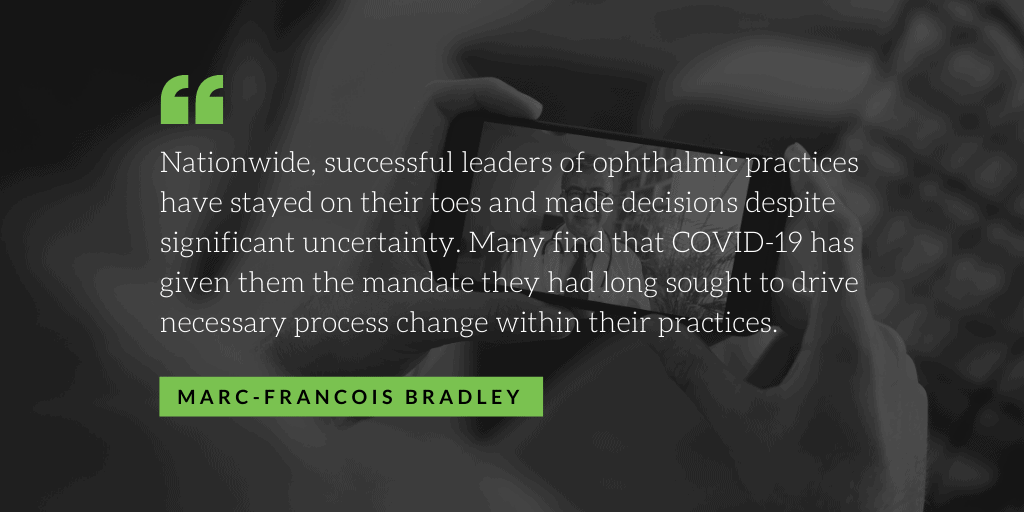
Utilizing Technology to Adapt
Utilizing Technology to Adapt and Navigate the Next Normal
The pandemic forced ophthalmology practices to revisit utilizing technology in more significant ways than ever before in order to address patient and clinic workflows. AE Magazine’s recent issue, “The Touchless Office: Patient Flow and Processing in the Age of COVID-19” features perspectives from doctors, administrators, and partners on utilizing technology to adapt and navigate the next normal.
Sophrona President, Marc-Francois Bradley contributed an article entitled “Mastering Adaptability Within the Ophthalmic Workforce — How to Adapt and Thrive Despite Ambiguity.”
In the article, Bradley discusses how COVID-19 has disrupted the industry while presenting opportunities for improvement. “Nationwide, successful leaders of ophthalmic practices have stayed on their toes and made decisions despite significant uncertainty.” Bradley explains, “Many find that COVID-19 has given them the mandate they had long sought to drive necessary process change within their practices.”
Industry wide, practices made difficult decisions quickly to continue operating business, shifting to urgent care, significantly reduced schedules, or temporarily closing.

Difficult times often lead to immense growth. It teaches us important lessons on how to adapt and navigate uncertainty and change. In this AE article, Bradley shares advice for eye care practices who are looking to transform historical processes through methods consumers have come to expect in other industries – online scheduling, online registration, pre-screening, and video communication.
The article focuses on:
- Moving care outside clinic walls
- Doubling down on change
- Rethinking patient volume
Continue to Article
Are You Utilizing Online Scheduling and Registration?

This year marks the 26th Anniversary of the airline industry’s groundbreaking launch of self scheduling. In the early days, airline tickets were purchased by phone, at the airport or through a travel agent and delivered by mail. In 1994, Southwest was the first U.S. airline to issue e-tickets. A year later, Alaska Airlines was the first to make their website interactive, allowing customers to book travel and purchase tickets through the internet (source). Today, it’s difficult to imagine booking travel any other way.
When Sophrona entered ophthalmology 15 years ago, the idea of patients scheduling appointments online was still a novelty.
“Patients should be able to schedule their own appointments just as travelers are able to book their own flights.”
-Sophrona’s Founding Thought
Although practices understand that patients want and expect more convenience, historically, healthcare has been slower to replace or integrate its legacy systems with new technologies.
In many ways, the challenges of the past year surrounding how to deliver safe and efficient patient care has leveled the playing field. More and more ophthalmology practices are utilizing technology to adapt and navigate the next normal.
Since COVID, solutions that may have taken years to implement have found their way to the front of the priority line. Telehealth, online scheduling, online registration through a practice’s patient portal, pre-screening to alleviate waiting room time, and virtual check-in; these are just a few of the solutions that are being leveraged to increase efficiency, productivity and patient volume in this post pandemic era.
Interested in learning more?
For more than a decade, Sophrona has set the standard in online patient-physician communication technology and software as a service. As a technology partner, we feel a responsibility to lean in and help practices just like yours understand how to utilize technology to adapt and deliver a more personalized patient experience.
We’ve learned many lessons that can help support your practice development initiatives this year. Please reach out to our team if you’re interested in learning how Sophrona can work with your practice to increase efficiency and productivity.


